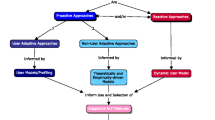Abstract
In an online survey, one hundred and thirteen college students were asked to describe the emotion regulation strategies they frequently use during learning. We found that learners tend to report using certain strategies more frequently than others, and that generally the strategies that are used most often are considered by leaners to be the most effective. We discuss the implications of these findings for the development of intelligent tutoring systems that train and scaffold effective strategies to help learners regulate their emotions.
Access this chapter
Tax calculation will be finalised at checkout
Purchases are for personal use only
Similar content being viewed by others
References
Linninbrink, L.A.: The role of affect in student learning: A multi-dimensional approach to considering the interaction of affect, motivation, and engagement. In: Schutz, P.A., Pekrun, R. (eds.) Emotion in Education, Amsterdam, pp. 13–36 (2007)
Gross, J.: Emotion regulation. In: Lewis, M., Haviland-Jones, J., Barrett, L. (eds.) Handbook of Emotions, 3rd edn., pp. 497–512. Guilford, New York (2008)
Author information
Authors and Affiliations
Editor information
Editors and Affiliations
Rights and permissions
Copyright information
© 2012 Springer-Verlag Berlin Heidelberg
About this paper
Cite this paper
Strain, A.C., D’Mello, S., Gross, M. (2012). How Do Learners Regulate Their Emotions?. In: Cerri, S.A., Clancey, W.J., Papadourakis, G., Panourgia, K. (eds) Intelligent Tutoring Systems. ITS 2012. Lecture Notes in Computer Science, vol 7315. Springer, Berlin, Heidelberg. https://doi.org/10.1007/978-3-642-30950-2_89
Download citation
DOI: https://doi.org/10.1007/978-3-642-30950-2_89
Publisher Name: Springer, Berlin, Heidelberg
Print ISBN: 978-3-642-30949-6
Online ISBN: 978-3-642-30950-2
eBook Packages: Computer ScienceComputer Science (R0)




